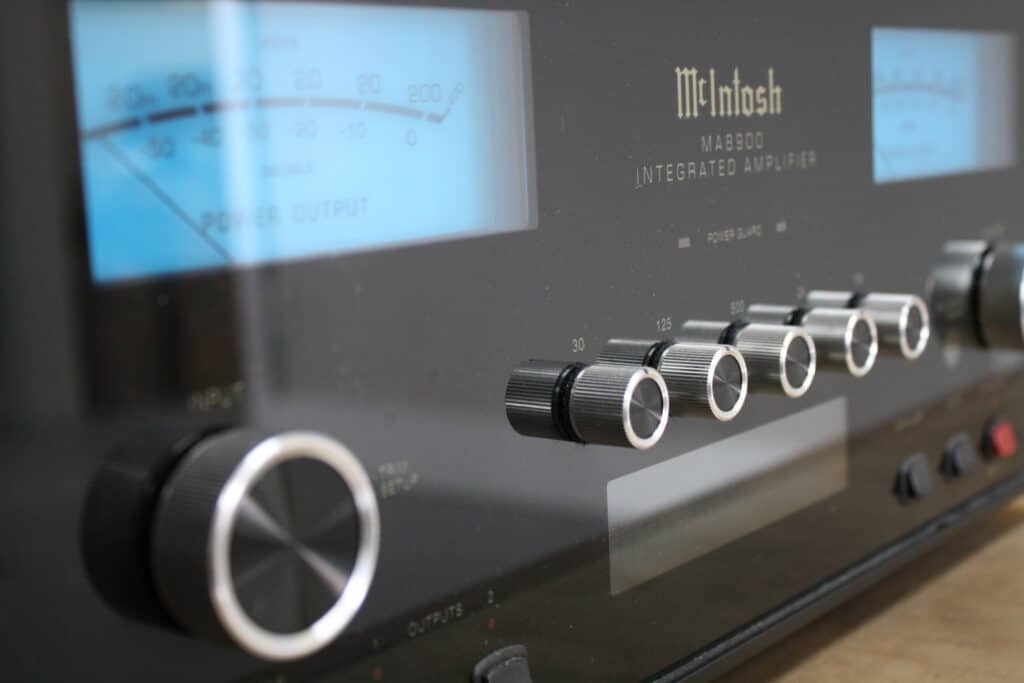Surround sound systems have revolutionized the way we experience audio in our homes, transforming mundane rooms into theatre-like cinematic environments. But how does a surround sound system actually work? And how can you get the best experience from it? In this post, we’ll cut through the technical talk and break down the essentials of surround sound, from choosing the right equipment to setting it up for maximum impact. Whether you’re setting up your first system or looking to upgrade, we’ll show you how to achieve cinema-quality sound in your own home.
How do Surround Sound Systems Work
Surround sound systems work by using multiple speakers to create a more immersive audio experience. Traditional stereo systems use two speakers, one for the left and one for the right side, to produce sound. However, surround sound systems use additional speakers, usually three to five, placed around the room to create a multidimensional soundscape. This includes speakers behind or beside the listener as well as in front, providing a more realistic and immersive audio experience.
One of the benefits of surround sound is that it allows for the separation of different sounds, meaning you can hear individual audio elements more clearly. For example, if you’re watching a movie in your home theater with a surround sound system, you may be able to hear the dialogue coming from the front speaker while the background music and sound effects are coming from other speakers around the room. This adds depth and realism to the audio, making it feel like you’re right in the middle of the action.
Types of Surround Sound Systems
There are several types of surround sound systems available, each designed to suit different room sizes and personal preferences. The most common configurations are the 5.1 and 7.1 channel systems.
5.1 channel system
This type of system uses five speakers and one subwoofer. The “5” refers to the five main speakers placed at the front left, center, front right, rear left, and rear right of the room. The “1” refers to the subwoofer responsible for producing bass sounds. These systems are commonly used in small to medium-sized rooms and provide an immersive audio experience. While they are less immersive than 7.1 systems, they are more affordable and easier to set up.
7.1 channel system
A 7.1-channel system uses eight discrete audio channels—seven speakers and one subwoofer. The speaker configuration typically involves one center speaker, located directly in front of the listener, to anchor dialogue and primary vocals. Flanking the center are two front speakers (left and right), which handle a large portion of the soundtrack and effects. Two surround speakers, positioned to the listener’s side, and an additional pair of rear surround speakers, placed behind the listener, work together to envelop the audience and add depth and dimension to the listening experience. The subwoofer delivers low-frequency effects, including deep tones and bass, providing the physical impact of cinematic explosions or the rumble of thunder.
Both systems offer greatly improved hi-fi audio over traditional two-channel stereo setups, making them popular choices for home theaters. However, the choice between a 5.1 or 7.1 system depends on the size of your room and your personal preferences for sound immersion.
Setting Up Your Surround Sound System
Setting up your surround sound system requires careful placement of the speakers and calibration for optimal sound quality. Follow these steps to set up your system properly:
- Determine the best room layout: The location of walls, windows, and furniture can affect the acoustics in your theater room. Choose a layout that allows for proper speaker placement and minimizes any potential audio reflections.
- Place speakers in their designated positions: Follow the guidelines for speaker placement provided by your system’s manual. Generally, the center speaker should be placed directly in front of the listener at ear level. In contrast, the front and surround speakers should be positioned at equal distances from the listening area. The subwoofer can be placed anywhere in the room, but it is recommended to place it near a corner for better bass response.
- Adjust speaker angles and heights: The angle and height of your speakers can greatly impact sound quality. Tilt front and surround speakers towards the listener and adjust their heights accordingly. The center speaker should be angled slightly downwards to better project dialogue towards the audience.
- Connect speakers to your receiver: Make sure to check the manual for specific instructions on connecting each speaker to its designated output on the receiver.
- Calibrate your system: Most receivers come with an automatic calibration feature that will optimize sound levels and frequencies for your specific room setup. If not, you can manually adjust these settings using a sound meter.
- Test your system: Once everything is set up and calibrated, play some audio or a movie to test the sound quality. Make necessary adjustments to achieve the desired level of immersion.
The setup of a surround sound system is not a one-time process. As your room layout or furniture arrangement changes, you may need to readjust the placement and calibration of your speakers for optimal sound. Regularly cleaning and maintaining your speakers can also help improve their performance.
Choosing the Right Equipment
With so many options available, choosing the right equipment for your surround sound system can be overwhelming. Here are a few factors to consider:
- Room size: The size of your room will impact the power and number of speakers you need. Small theater rooms may only require 5.1 surround sound, while larger rooms may benefit from a 7.1 setup.
- Audio quality: Different speaker brands and models have unique sound qualities. Do your research and read reviews to find the best fit for your personal preferences. Some brands we recommend and work with for installing high-quality home audio are Nice, Sonance, James Loudspeaker, Monitor Audio, and Episode.
- Budget: Surround sound systems can range from affordable to extremely expensive. Determine your budget and prioritize which components are most important for you.
- Compatibility: Make sure all of your equipment is compatible with each other and that they will work together seamlessly.
- Audio technology: Brands like Dolby Atmos and DTS:X offer advanced audio technologies that provide a more immersive sound experience. We recommend investing in these technologies for an enhanced listening experience.
The type of speakers you choose for your home theater also plays a role in the overall sound quality of your surround sound system. Here are some common types of speakers and their functions:
- Upright or freestanding speakers – Also known as tallboy speakers, these are the largest type of speakers and typically provide the best overall sound quality. They are designed to be placed on the floor and usually consist of multiple drivers for different audio frequencies.
- We recommend the Sony 5.1ch Home Cinema Soundbar System with Tallboy Speakers for a powerful and immersive surround sound experience.
- Compact Speakers – These are smaller speakers that can be placed on shelves or mounted on the wall. While they may not provide as much bass as larger speakers, compact speakers are a great option for smaller rooms or those with limited space.
- In-Ceiling & In-Wall Speakers – These speakers are designed to be installed directly into your ceiling or wall, providing a clean and streamlined look. They are a great option for those who don’t want visible speakers in their theater room.
- Sonance offers a wide range of in-ceiling & in-wall speakers that blend seamlessly into any room.
- Bookshelf Speakers- Similar to compact speakers, bookshelf speakers are smaller and can be placed on a shelf or mounted on a stand. They provide good sound quality but may not have as much low-end as larger speakers.
If you need help choosing the right equipment for your surround sound system, AIS can help. We offer professional installation services and can recommend the best speakers for your specific needs and budget.
Set Up a Surround Sound System with AIS
Investing in a quality surround sound system is one thing, but setting it up correctly is another. AIS offers professional installation services for all kinds of surround sound systems, whether it’s a basic home theatre setup or a custom-designed system for your entertainment room. With expert technicians and high-quality equipment, you can trust AIS to deliver a seamless surround sound experience. Contact us today for more information, or use our budget calculator to plan expenses.




